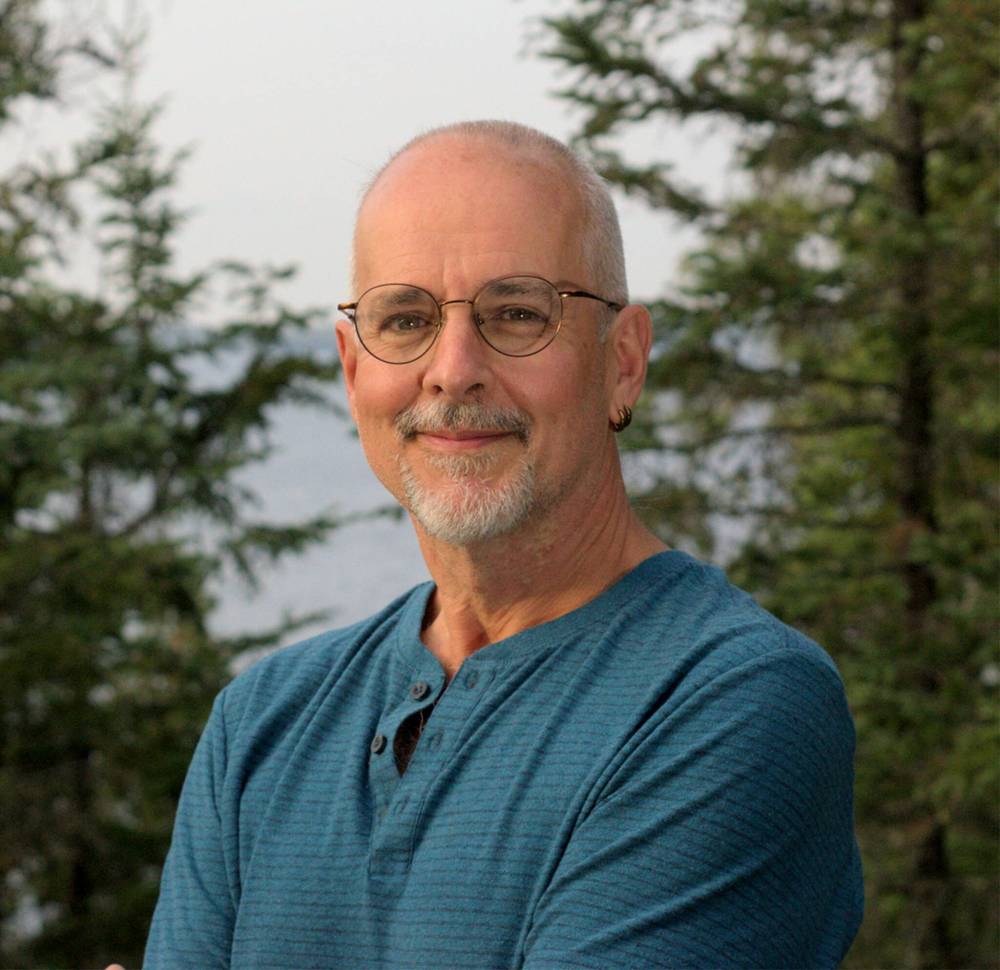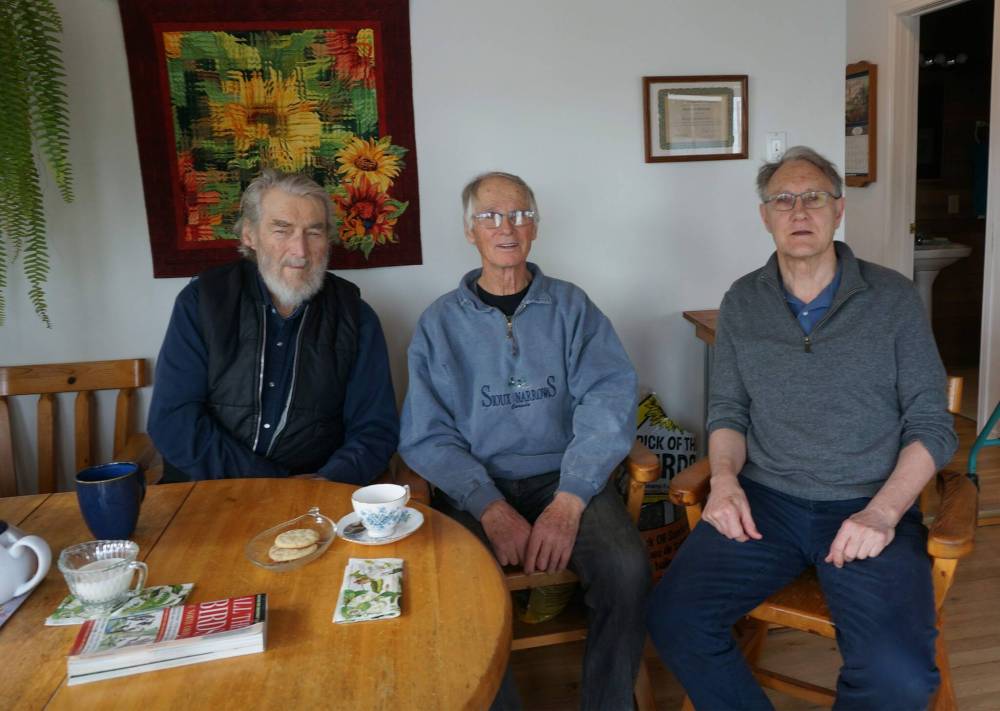Trio urges wildlife protection for highway twinning project
Advertisement
Read this article for free:
or
Already have an account? Log in here »
To continue reading, please subscribe:
Monthly Digital Subscription
$1 per week for 24 weeks*
- Enjoy unlimited reading on winnipegfreepress.com
- Read the E-Edition, our digital replica newspaper
- Access News Break, our award-winning app
- Play interactive puzzles
*Billed as $4.00 plus GST every four weeks. After 24 weeks, price increases to the regular rate of $19.00 plus GST every four weeks. Offer available to new and qualified returning subscribers only. Cancel any time.
Monthly Digital Subscription
$4.75/week*
- Enjoy unlimited reading on winnipegfreepress.com
- Read the E-Edition, our digital replica newspaper
- Access News Break, our award-winning app
- Play interactive puzzles
*Billed as $19 plus GST every four weeks. Cancel any time.
To continue reading, please subscribe:
Add Free Press access to your Brandon Sun subscription for only an additional
$1 for the first 4 weeks*
*Your next subscription payment will increase by $1.00 and you will be charged $16.99 plus GST for four weeks. After four weeks, your payment will increase to $23.99 plus GST every four weeks.
Read unlimited articles for free today:
or
Already have an account? Log in here »
Hey there, time traveller!
This article was published 24/02/2025 (225 days ago), so information in it may no longer be current.
Wildlife carcasses and live animals are a common sight when Blair Mahaffy drives along an untwinned section of the Trans-Canada Highway in Whiteshell Provincial Park.
He once hit a deer and has had a close call with a black bear on the two-lane route, which cuts through a heavily forested area that is home to many species.
“The deer are all around all the time, and you appreciate them. I found it really distressing,” Mahaffy said of the collision. “It bugged me for days afterward.”

SUPPLIED
West Hawk Lake resident Blair Mahaffy says he would welcome wildlife fencing when the Trans-Canada Highway is twinned to four lanes west of the Manitoba boundary with Ontario.
The West Hawk Lake resident is among those who would welcome wildlife fencing and overpasses or underpasses — which exist in Alberta and B.C. — to reduce collisions when the Manitoba government expands a roughly 16-kilometre stretch of the highway to four lanes, just west of the boundary with Ontario.
“It would really be helpful both for safety and to respect wildlife,” Mahaffy said.
The province has not yet made a decision. The project is in the conceptual design phase; construction is several years away.
“This phase includes an assessment of wildlife considerations and whether mitigation measures, such as fencing and crossings, are required,” a government spokesperson wrote in an email.
“Manitoba Transportation and Infrastructure considers wildlife movements and impact mitigation to be an important factor to the evaluation of options and in the design of any required infrastructure.”
Manitoba’s last remaining untwinned section of the Trans-Canada had an annual average daily traffic volume of about 5,300 vehicles in 2023, a government report said.
A government spokesperson said 39 collisions involving animals were reported on this section of the Trans-Canada from 2018 to 2022. The figures, which are the most recent available, were provided to the government by Manitoba Public Insurance and/or law enforcement.
The area’s rich wildlife includes moose, timber wolves, lynx, red foxes and skunks.
Kenora residents Peter Kirby, Doug Orchard and Henry Rasmussen wrote to the Manitoba government to advocate for wildlife crossings similar to Banff National Park’s underpasses and overpasses, which have been hailed as a success story. They also asked the province to consider alternatives to twinning, given the potential impact on the environment and species.
The men, who have ties to Manitoba, are lobbying Ontario to build wildlife crossings for its own Trans-Canada twinning project.
“From our perspective, money is not the object. We should be prepared to make the argument that if you’re already drilling and blasting, what pain is it to do the right thing and build corridors?” Kirby said.
If a government’s reasoning for twinning a highway is safety, wildlife crossings are an important part of that, Orchard said.
“They have to be fenced in between the corridors or else the benefit is negligible,” he said.
Rasmussen expressed concerns about the dwindling moose population and collisions.
“(Crossings) are a difficult and expensive thing to think about, but it’s bad,” he said of the population decline.
Advocates say crossings help to reduce collision-related injuries to humans and animals, insurance claims, travel delays and emergency-service responses, while connecting wildlife to their habitats and promoting healthy populations.
Banff’s first two overpasses were built in 1996, after Parks Canada looked at ways to avoid collisions and reconnect landscapes while twinning the Trans-Canada in the national park.

SUPPLIED
Kenora residents Henry Rasmussen (from left), Doug Orchard and Peter Kirby are lobbying the Manitoba and Ontario governments to build wildlife crossings in Trans-Canada Highway twinning projects.
The agency said fencing and 49 crossings (42 underpasses and seven overpasses) in Banff and two national parks in B.C. — Kootenay and Yoko — have reduced wildlife collisions by more than 80 per cent, and by more than 96 per cent for elk and deer alone.
Tim Johnson, a landscape connectivity specialist with the non-profit Yellowstone to Yukon Conservation Initiative, said that success inspired crossing projects by governments in Alberta and B.C.
“It really has shown that when you can create these structures and have wildlife fencing directing animals to the crossings, it really, really reduces the risk of wildlife-vehicle collisions. It also allows animals to move across the landscape as they would have done before a highway was cutting through it,” he said.
An overpass above a four-lane section of the Trans-Canada in Alberta east of Canmore was completed last fall. The project, which includes 12 kilometres of fencing, cost about $17.5 million, becoming Alberta’s first crossing outside a national park.
Yellowstone to Yukon worked with the Alberta government on the project. The overpass is within a roughly 40-kilometre highway section where 30,000 vehicles travel daily, and about 70 vehicle-wildlife collisions happen each year, officials said in 2022.
B.C.’s government awarded a $5.8-million contract for an overpass project, which includes fencing, to reduce collisions with bighorn sheep on a two-lane provincial highway near Radium Hot Springs. The overpass is expected to open later this year.
Low-cost options include retrofits of existing bridges or culverts, Johnson said.
It took up to five years for some wary species, such as grizzly bears, to begin using crossings, Parks Canada’s website states.
The agency said an ongoing study found each species has distinct preferences. Grizzlies, wolves, elk, moose and deer prefer crossings that are high, wide and short in length, while black bears and cougars tend to prefer long, low and narrow underpasses.
Individual animals occasionally get onto a fenced highway. In very rare cases, it is due to a fence being damaged by a fallen tree, Johnson said.
He said transportation agencies are increasingly incorporating wildlife into highway planning.
Decisions on crossings should be guided by wildlife movement data, he said.
“It can cost more to do nothing if you have an area with high collisions,” Johnson said. “If it’s a stretch of road where moose and deer are getting hit often, it sounds like there would be a pretty compelling economic argument to invest in these structures for (Manitoba’s) twinning project.”
chris.kitching@freepress.mb.ca

Chris Kitching is a general assignment reporter at the Free Press. He began his newspaper career in 2001, with stops in Winnipeg, Toronto and London, England, along the way. After returning to Winnipeg, he joined the Free Press in 2021, and now covers a little bit of everything for the newspaper. Read more about Chris.
Every piece of reporting Chris produces is reviewed by an editing team before it is posted online or published in print — part of the Free Press‘s tradition, since 1872, of producing reliable independent journalism. Read more about Free Press’s history and mandate, and learn how our newsroom operates.
Our newsroom depends on a growing audience of readers to power our journalism. If you are not a paid reader, please consider becoming a subscriber.
Our newsroom depends on its audience of readers to power our journalism. Thank you for your support.




